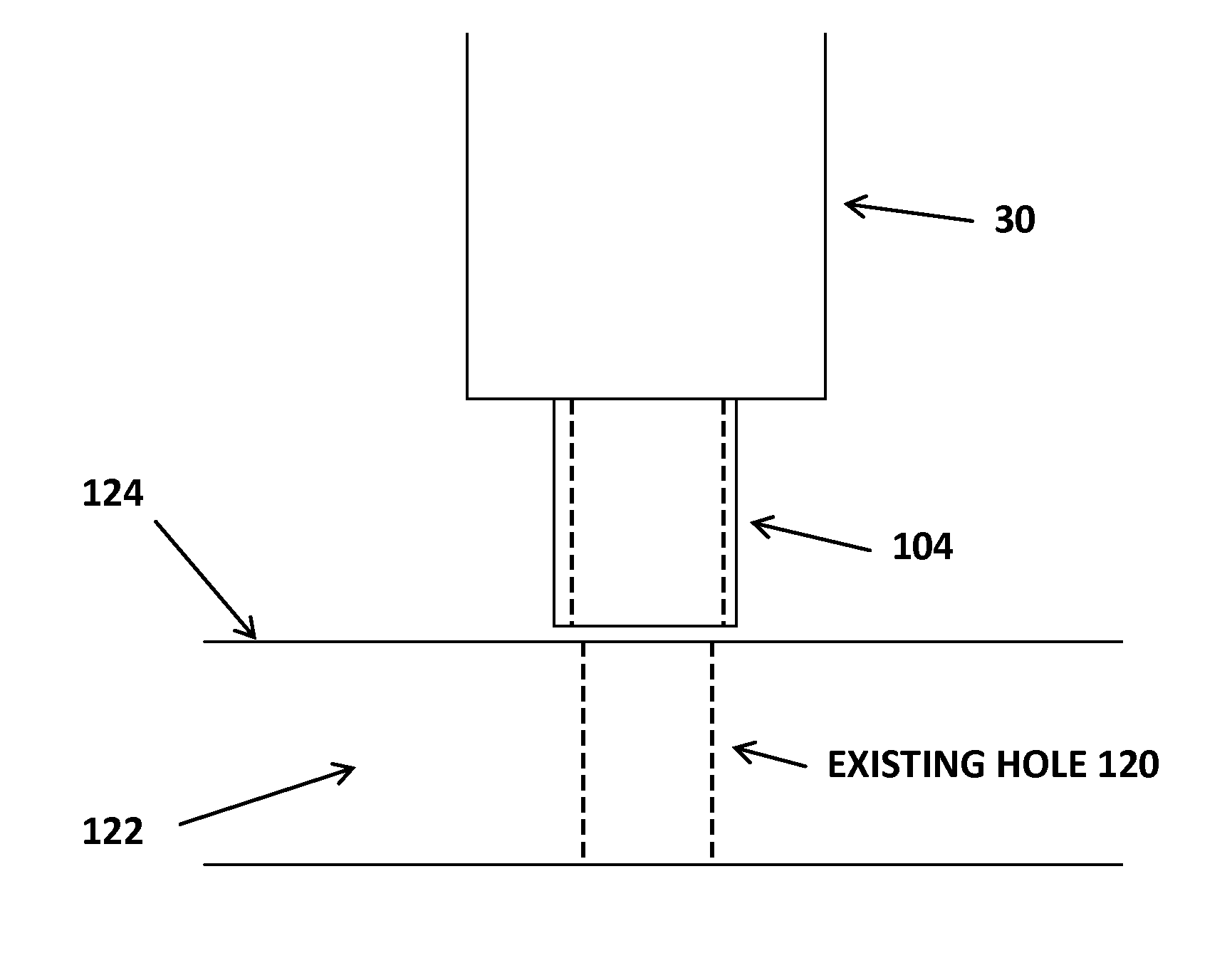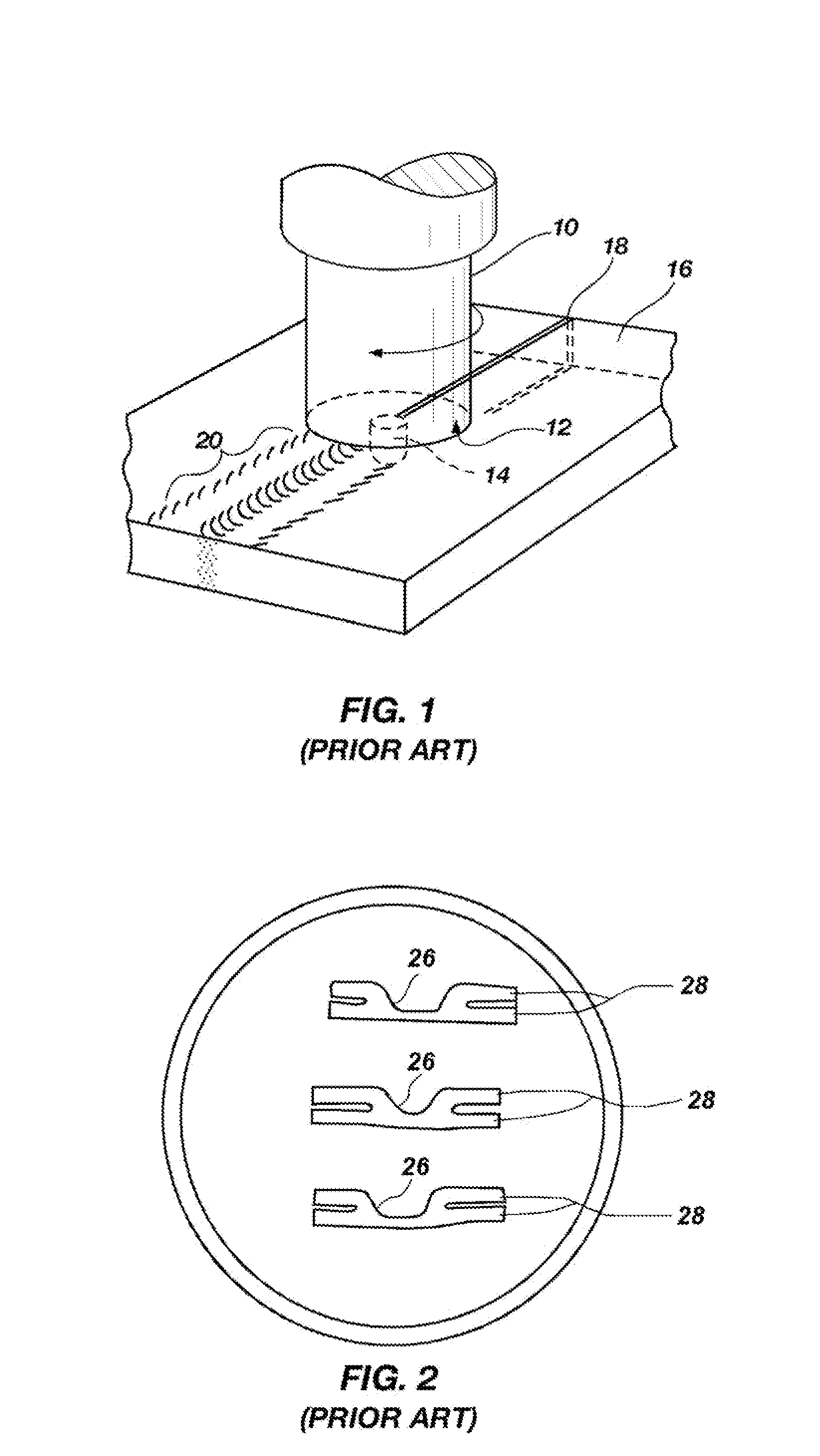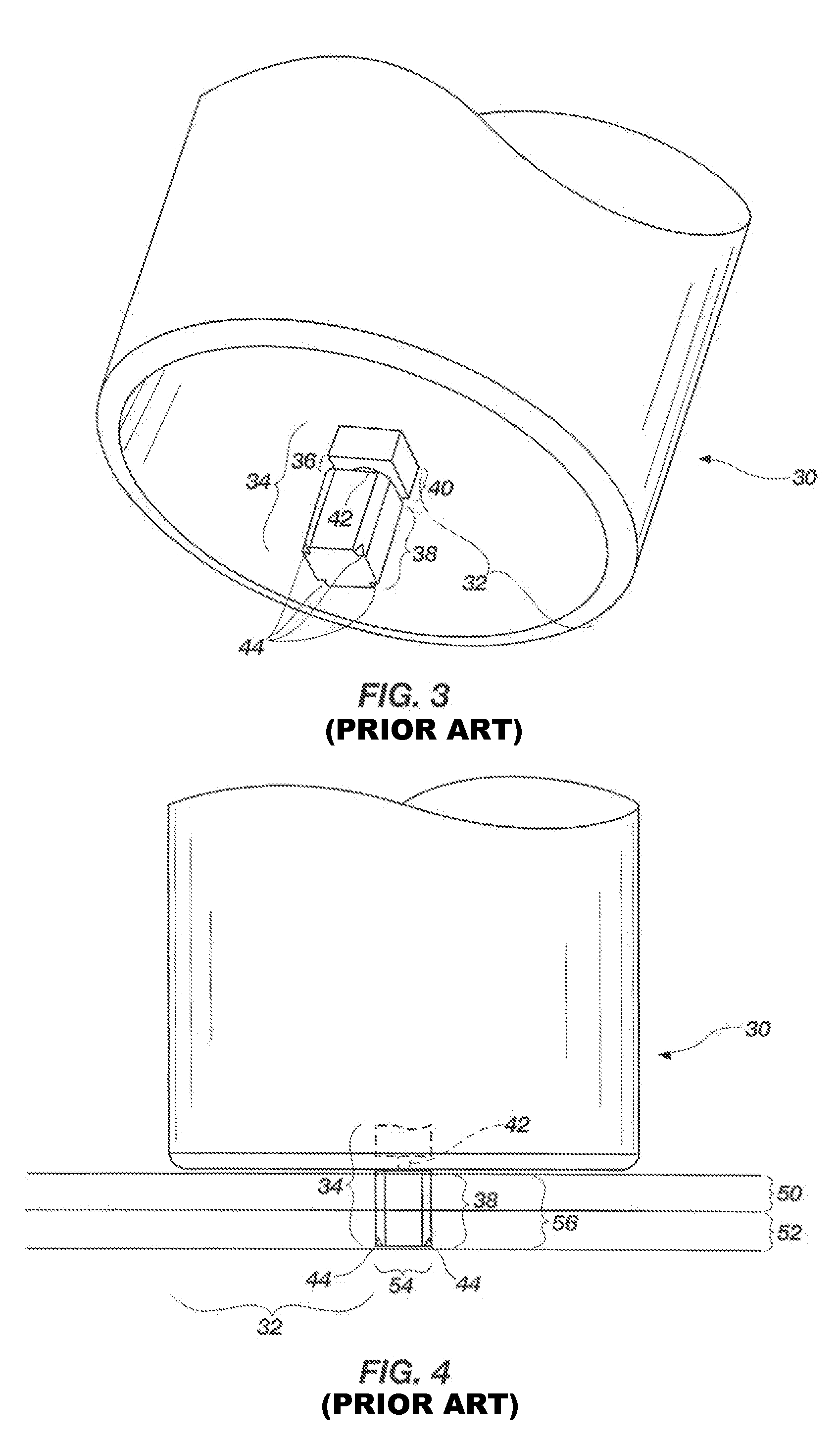Friction bit joining of materials
a friction stir and material technology, applied in the direction of manufacturing tools, soldering devices, auxillary welding devices, etc., can solve the problems of limiting the load carrying capacity, unable to use screws or bolts, and high cost of multiple components and assemblies, so as to improve the cutting geometries and improve the bit joining
- Summary
- Abstract
- Description
- Claims
- Application Information
AI Technical Summary
Benefits of technology
Problems solved by technology
Method used
Image
Examples
Embodiment Construction
[0037]Reference will now be made to the drawings in which the various elements of the present invention will be given numerical designations and in which the invention will be discussed so as to enable one skilled in the art to make and use the invention. It is to be understood that the following description is only exemplary of the principles of the present invention, and should not be viewed as narrowing the claims which follow.
[0038]The prior art teaches a rotating friction stirring tool having a non-consumable shoulder combined with a detachable and at least partially consumable bit that forms the basis of a friction bit joining method. The bit may be totally consumable or partially consumable. FIG. 3 is an illustration of how the prior art teaches that the friction stirring tool may be constructed.
[0039]FIG. 3 is a perspective illustration of the prior art that shows a friction bit joining tool 30 having a shoulder area 32 and a detachable and at least partially consumable bit ...
PUM
| Property | Measurement | Unit |
|---|---|---|
| Travel speeds | aaaaa | aaaaa |
| rake angle | aaaaa | aaaaa |
| rake angle | aaaaa | aaaaa |
Abstract
Description
Claims
Application Information
 Login to view more
Login to view more - R&D Engineer
- R&D Manager
- IP Professional
- Industry Leading Data Capabilities
- Powerful AI technology
- Patent DNA Extraction
Browse by: Latest US Patents, China's latest patents, Technical Efficacy Thesaurus, Application Domain, Technology Topic.
© 2024 PatSnap. All rights reserved.Legal|Privacy policy|Modern Slavery Act Transparency Statement|Sitemap



